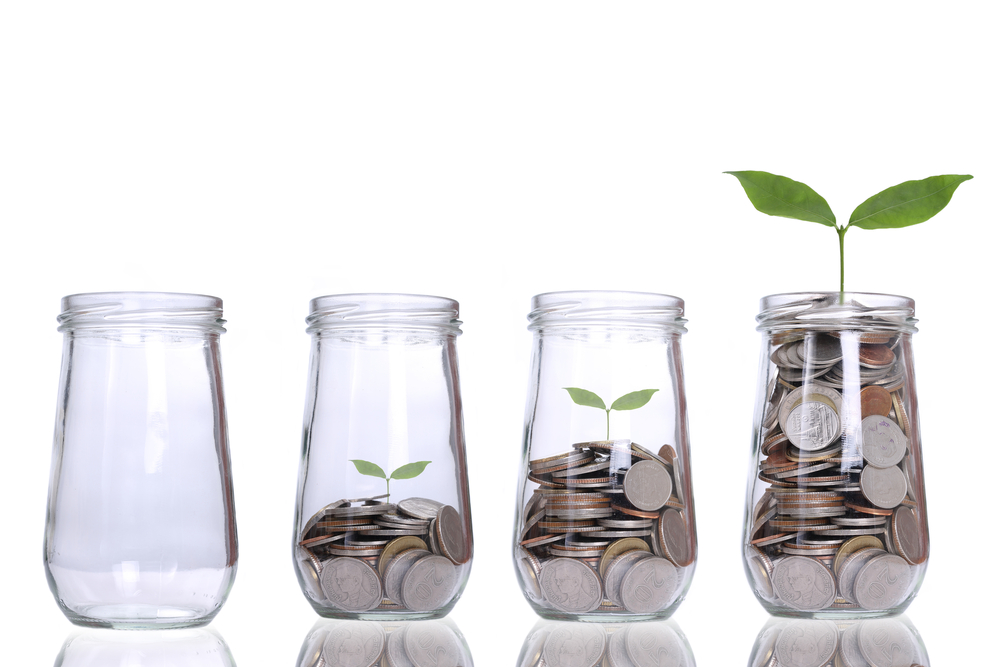Saving and Investing
Introduction
Definitions and Basics
Saving, from the Concise Encyclopedia of Economics
Saving means different things to different people. To some it means putting money in the bank. To others it means buying stocks or contributing to a pension plan. But to economists, saving means only one thing—consuming less in the present in order to consume more in the future.
An easy way to understand the economist’s view of saving—and its importance for economic growth—is to consider an economy in which there is a single commodity, say, corn. The amount of corn on hand at any point in time can either be consumed (literally gobbled up) or saved. Any corn that is saved is immediately planted (invested), yielding more corn in the future. Hence, saving adds to the stock of corn in the ground, or in economic jargon, the stock of capital. The greater the stock of capital, the greater the amount of future corn, which can, in turn, either be consumed or saved….
Investment, from the Concise Encyclopedia of Economics
Although in general parlance investment may connote many types of economic activity, economists normally use the term to describe the purchase of durable goods by households, businesses, and governments. Private (nongovernmental) investment is commonly divided into three broad categories: residential investment, which accounts for about a quarter of all private investment (25.7 percent in 1990); nonresidential, or business, fixed investment, which accounts for most of the remainder; and inventory investment, which is small but volatile. Indeed, inventory investment is often negative (it was in 1990, and in three years during the eighties). Business fixed investment, in turn, is composed of equipment and nonresidential structures. Equipment now makes up over three-quarters of business investment….
Diversification: How to Spread It Around, at SocialStudiesforKids.com.
Diversification can best be described by the following phrase: “Don’t put all your eggs in one basket.”
That means several things, depending on what part of economics we’re discussing. In every case, though, it means to spread out your money or your time or your other resources….
Efficient Capital Markets, from the Concise Encyclopedia of Economics
The efficient markets theory (EMT) of financial economics states that the price of an asset reflects all relevant information that is available about the intrinsic value of the asset. Although the EMT applies to all types of financial securities, discussions of the theory usually focus on one kind of security, namely, shares of common stock in a company. A financial security represents a claim on future cash flows, and thus the intrinsic value is the present value of the cash flows the owner of the security expects to receive.
Theoretically, the profit opportunities represented by the existence of “undervalued” and “overvalued” stocks motivate investors to trade, and their trading moves the prices of stocks toward the present value of future cash flows. Thus, investment analysts’ search for mispriced stocks and their subsequent trading make the market efficient and cause prices to reflect intrinsic values. Because new information is randomly favorable or unfavorable relative to expectations, changes in stock prices in an efficient market should be random, resulting in the well-known “random walk” in stock prices. Thus, investors cannot earn abnormally high risk-adjusted returns in an efficient market where prices reflect intrinsic value.
In the News and Examples
Owen on Parenting, Money, and the First National Bank of Dad, podcast at EconTalk. May, 2012.
David Owen, author of The First National Bank of Dad, talks with EconTalk host Russ Roberts about how to educate our children about money and finance. Owen explains how he created his own savings accounts for his kids that gave them an incentive to save and other ways to teach them about postponing gratification, investing, keeping money in perspective and other life lessons. The conversation closes with a discussion of the value of reading to your kids.
Dissaving–spending more than your income now–means consuming less in the future. You can only do that by borrowing or by drawing down your previous savings. McArdle on Debt and Self-Restraint. EconTalk podcast, Dec. 2009.
Megan McArdle, who writes the blog Asymmetrical Information at The Atlantic, talks with EconTalk host Russ Roberts about debt and the challenge of self-restraint. She discusses her recent Atlantic article on her experience at a Dave Ramsey personal finance seminar, how it affected her life, and the psychology of self-restraint. The conversation concludes with a discussion of debt and savings during the Great Depression and the current national debt of the United States.
A Little History: Primary Sources and References
Franco Modigliani, biography from the Concise Encyclopedia of Economics
Franco Modigliani, an American born in Italy, won the 1985 Nobel Prize for two contributions. The first was “his analysis of the behavior of household savers.” In the early fifties Modigliani, trying to improve on Keynes’s consumption function, introduced his “life cycle” model of consumption. The basic idea was common sense, but no less powerful for that reason. Most people, he claimed, want to have a fairly stable level of consumption. If their income is low this year, for example, but expected to be high next year, they do not want to live like paupers this year and princes next. So in high-income years, Modigliani argued, people save. They spend more than their income (dissave) in low-income years. Because income begins low for young adults just starting out, then increases in the middle years, and declines on retirement, said Modigliani, young people borrow to spend more than their income, middle-aged people save a lot, and old people run down their savings….
Advanced Resources
Fama on Finance, podcast at EconTalk. January 30, 2012.
Eugene Fama of the University of Chicago talks with EconTalk host Russ Roberts about the evolution of finance, the efficient market hypothesis, the current crisis, the economics of stimulus, and the role of empirical work in finance and economics.
Related Topics
Financial Markets
Real, Relative, and Nominal Prices
GDP
Human Capital
Insurance
Risk and Return

